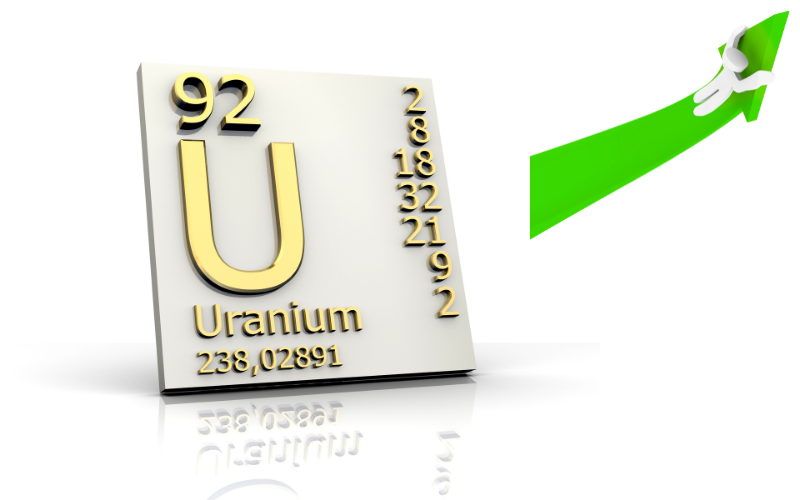
- Uranium is the key solution to decarbonization
- Electrification of transport demands more nuclear power
- Emerging nations like India and China have made strong commitment to nuclear power
- Recent spike in prices is due to SRUUF accumulation
- Long term bullish prospects remain in place for #LEU and #URA
In June we discussed the investment thesis for uranium noting that several analysts have called it the “greatest trade of our lifetime”. Since then uranium stocks have exploded and we take another look at the reasons why this is suddenly the case.
The bullish premise for uranium rests on the idea that in order to decarbonize and electrify the transportation industry at the same time the world will have no choice but to develop greater nuclear energy capacity. Nuclear power has long been reviled in the advanced industrialized world as a dangerous source of energy especially after the Fukushima nuclear power plant disaster in Japan. Germany for example plans to phase out nuclear power altogether by 2022 and has seen the sector’s share dwindle down to 11.4% from 29.5% in 2000. The US has also shut down some reactors like New York’s Indian Point. Lately however the Biden Administration has been much more constructive in its stance towards nuclear, especially as it tries to decarbonize as quickly as possible.
The true demand for nuclear however is coming from China and India as the emerging world economies have decided that the non-polluting aspects of nuclear far outweigh the risks of any potential meltdown. Currently there are 444 nuclear reactors around the world and approximately 51 new ones being constructed in 16 countries. If the trend towards electrification continues it seems inevitable that more nuclear plants will need to come on line as the energy production from solar and wind, while very impressive in its gains, will simply not be enough to fill the energy gap needed by the new battery driven transportation sector.
The EV sector is in its embryonic stages, but as battery capacity and cost continues to decline electric vehicles will become not only far less polluting than ICE vehicles but also far less expensive to own and maintain. The EV market will soon transform from a novelty to a viable and highly competitive transportation alternative and that in turn will create a vast need to expand nuclear reactor capacity in order to fully decarbonize the transportation chain.
Meanwhile the recent massive moves in uranium and uranium related stocks has been driven by the Sprott Uranium Trust (SRUUF) which has raised more than a $1 Billion and gone on a massive purchase spree to buy and store physical uranium. According to Seeking Alpha, “Since launching the closed end trust less than a month ago, SRUUF has already acquired 24 million pounds of uranium. On some days, SRUUF has acquired more than 500,000 pounds of uranium. Acquiring 24 million pounds in a market where annual demand is 180 million pounds is a game changer. This new source of demand has greatly impacted both the spot and term market.”
While the sudden demand by the Sprott Trust is sure to abate somewhat in the near term as the vehicle completes the allocation of its capital the long term prospects for uranium remain bullish for all the reasons stated above. Demand for uranium tends to follow multi-year cycles as mining and production tend to take a long time to complete. This could be especially true if the advanced industrialized nations pivot in their policy positions and like the emerging economies decide that nuclear power should be a key part of the energy mix in a decarbonized world. As the uranium market remains tiny on a relative basis to other energy sources such a shift in demand could push the spot price of the metal to fresh all time highs supporting the thesis that this remains “the greatest trade of our lifetime”.





